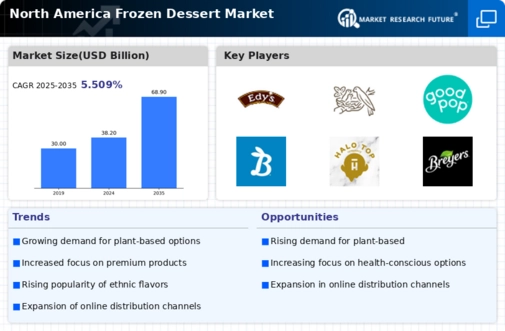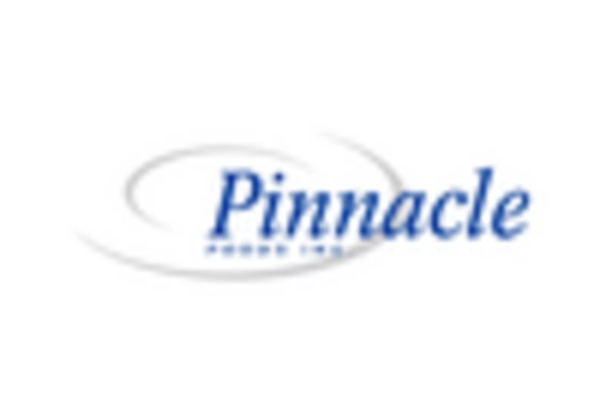The frozen dessert market in North America is characterized by a dynamic competitive landscape, driven by innovation, consumer preferences for healthier options, and the increasing demand for premium products. Major players such as Unilever (GB), Nestle (CH), and General Mills (US) are strategically positioned to leverage these trends. Unilever (GB) focuses on sustainability and product diversification, while Nestle (CH) emphasizes health-conscious offerings. General Mills (US) is enhancing its portfolio through acquisitions and partnerships, collectively shaping a competitive environment that prioritizes quality and consumer engagement.
Key business tactics within this market include localizing manufacturing to reduce costs and optimize supply chains, which is particularly crucial given the rising costs of raw materials. The competitive structure appears moderately fragmented, with several key players holding substantial market shares. This fragmentation allows for niche brands to thrive, while larger companies dominate through economies of scale and extensive distribution networks.
In September 2025, Unilever (GB) announced a partnership with a leading plant-based ingredient supplier to expand its range of dairy-free frozen desserts. This strategic move not only aligns with the growing consumer demand for plant-based options but also enhances Unilever's commitment to sustainability. By diversifying its product offerings, Unilever is likely to capture a broader market segment, positioning itself favorably against competitors.
In October 2025, Nestle (CH) launched a new line of low-sugar ice creams, responding to the increasing consumer focus on health and wellness. This initiative reflects Nestle's strategy to innovate within the frozen dessert category, catering to health-conscious consumers while maintaining taste and quality. The introduction of these products may strengthen Nestle's market position, particularly among health-oriented demographics.
In August 2025, General Mills (US) completed the acquisition of a popular artisanal ice cream brand, enhancing its portfolio with premium offerings. This acquisition is indicative of General Mills' strategy to penetrate the premium segment of the market, which has been experiencing robust growth. By integrating this brand, General Mills could leverage its distribution capabilities to expand the reach of these premium products, thereby increasing its competitive edge.
As of November 2025, current trends in the frozen dessert market include a strong emphasis on digitalization, sustainability, and the integration of AI in product development and marketing strategies. Strategic alliances are increasingly shaping the competitive landscape, enabling companies to pool resources and expertise. Looking ahead, competitive differentiation is likely to evolve from traditional price-based competition to a focus on innovation, technology, and supply chain reliability, as companies strive to meet the changing preferences of consumers.


















Leave a Comment